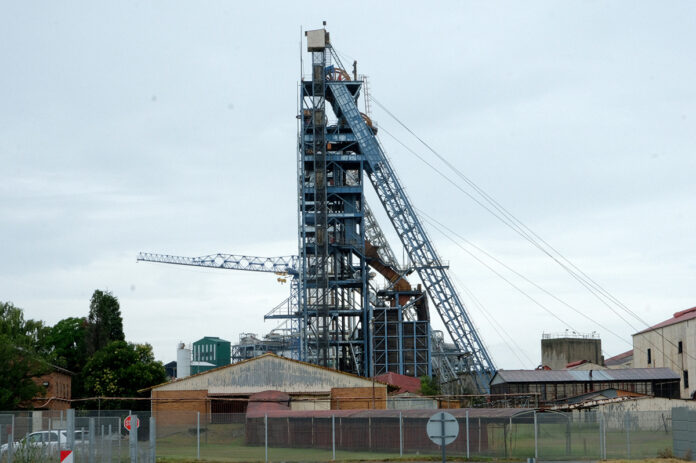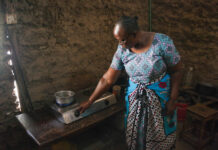
By Dianah Chiyangwa
Johannesburg, South Africa: On 17 July 2023, SAREM, released an industrial and inclusive developmental plan for the renewable energy and storage value chain by 2030.
The draft was released for public comments but met with mixed reactions from South Africans in general. Green Connections, an ecojustice organization, working on standing up for environmental and social justice, said that SAREM has a fatal flaw it conflates electricity and energy and its assumption is that renewable energy means electricity generation from renewable sources.
Given the climate crisis, there is an increasing need for a renewable energy action plan.
The South African Renewable Energy Masterplan (SAREM) is appreciated for its goal of articulating its vision, and action plan for the power sector with renewable electricity and associated storage but it falls short of articulating a vision for renewable energy more broadly.” Kholwani Simelane and Liziwe McDaid for Green Connections said.
The Green Connection’s Energy Advocacy Officer Kholwani Simelane added, “It has been twenty-five years since the 1998 White Paper on Energy emphasized the need to focus on renewable energy, as it was a new area to explore. While, historically, resources had been directed at nuclear and fossil fuel, the intensifying climate crisis, coupled with the urgent need for a just energy transition, means we must put the majority of our efforts into renewable energy sources.”

In terms of its vision, key objectives, and pillars SAREM, suggests that it contributes to a just transition and supports the inclusive shift of South Africa’s electricity supply industry from a centralized model to a decentralized energy structure.
The development of renewable energy and storage remains (worldwide and in South Africa) mainly limited to middle- and high-income households as well as medium- and large-scale businesses.
The plan also suggests that widening access to all is not only a socially imperative but would further augment the scale of the local market, underpinning industrial development, and that, renewable energy and storage activities (both power plants and industrial operations), if located in just transition hotspots, such as Mpumalanga’s coalfields, can also contribute to addressing the impacts associated with the closure of coal-based activities.
In this regard, Green Connections noted that a reasonable objective for an industrial plan is but not optimal for a plan that should aim at ensuring that society receives affordable reliable energy services from renewable energy.
Green Connections noted SAREM’s interventions aimed at supporting the demand for renewable energy and storage technologies, the need to strengthen the grid, and the need for clear tariff structures that enable a decentralized electricity system as an industrial plan but not a societal one.
The organization also indicated that the plan does not speak to energy services such as hot water, solar cooking, household energy security, and the need for affordable, transparent tariff structures, and it does not speak to social ownership of renewable electricity infrastructure.
On driving industrial development, SAREM suggests that the industrial development of the renewable energy and storage value chains in South Africa is one of the two core objectives of SAREM (the other being fostering inclusive development).
As demand for renewable energy and storage grows domestically, in the region, and globally, an opportunity exists to build domestic industrial value chains to supply the booming market. This plan, however, was disputed by Green Connections, not focusing on the mining-affected communities, nor is there any acknowledgment of the damage that has been inflicted by the mining sector to date, and their failure to adequately compensate local communities or to rehabilitate post-mining.
During a public virtual meeting to review and comment on SAREM, Gaynor Paradza questions whether the plan refers to inclusive development in the sector, and how will it ensure that land-based investments for renewable energy development do not undermine the communities’ constitutional rights to land which were negotiated under the Land Reform Programme.
Gaylor Montmasso-Clair Senior Economist at Trade and Industrial Policy Strategies (TIPS) News and SAREM facilitator, working towards Just Transition to an inclusive green economy said on his Twitter post that “South Africa has imported $2.5 billion worth of solar panels, lithium-ion batteries, and inverters in the first half of 2023” and he alluded that it is a missed opportunity for local industrialization.

According to Neville van Rooy, “Renewable energy, unlike the other energy sources, is the only real concrete and tangible opportunity for inclusive, people’s power. This is a chance to change the fortunes of marginalized communities, giving them the power to drive their own, experimental phase into the just transition”
SAREM, across the value chains, local capabilities also exist in the manufacturing of (centralized) inverters, civil works, electrical balance of plant (e.g., cables) as well as numerous services (such as yield assessment and various advisory services). In the future, existing capabilities could also be leveraged to develop opportunities around end-of-life management (reuse, remanufacturing, and recycling). “If renewable energy is to be part of the just transition, then it cannot be based on the same models of extraction of the past,” indicated Green Connection.
Although Green Connection welcomes SAREM’s plan of action relating to skills development, part of which is to develop and run a digital match-making platform (PowerUp) between industry, education providers, and social compact partners, creating demand-led skills and planning communication hub, to address skills priorities in the sector, Simelane adds that the ridiculously short public comment period (just two weeks) was insufficient to ensure a participatory process and promote inclusivity. He says, “While the SAREM speaks to the extensive consultation process, highlighting over 200 engagements with industry and government stakeholders, we want evidence of the engagements with civil society. Unfortunately, consultations with affected communities and household stakeholders, such as women – the majority of whom bear the responsibility for energy security in their homes – were not evident in the plan.”
Green Connection emphasized on electricity needs to be broadened to take into account other non-electricity uses of renewable energy. Windmills for water pumping, solar water heating, and biogas for cooking. All of these technologies need to be included in the basket of renewable energy that is for development and ending energy poverty.













